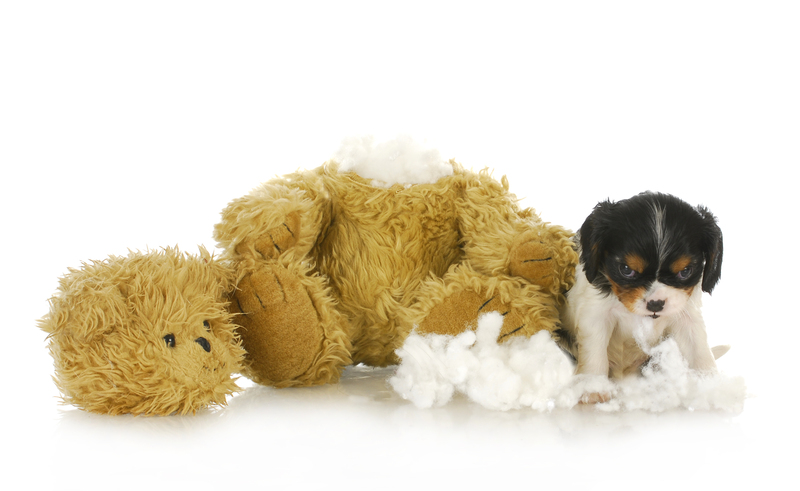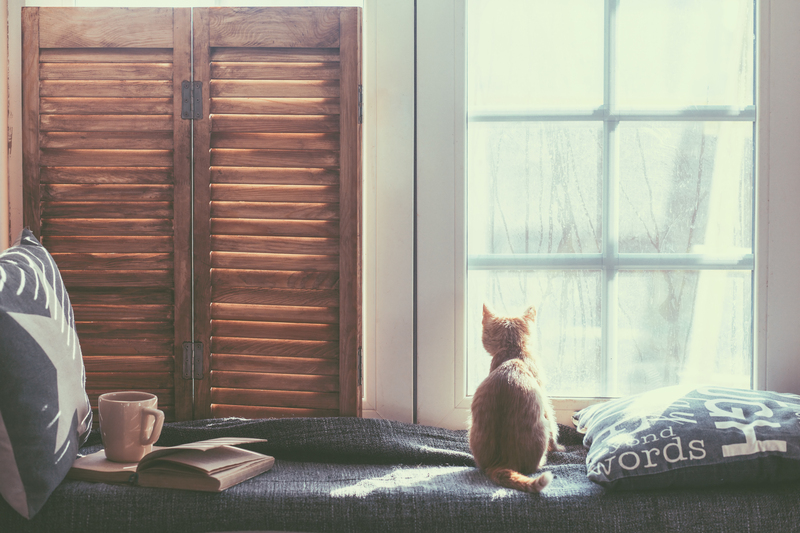Eco-Friendly Hacks for Giving Old Items a New Life
Are you looking for smart, satisfying ways to refresh your home and life while reducing waste? Embracing eco-friendly hacks for giving old items a new life can help minimize your environmental footprint, save money, and even unleash your creativity! In this comprehensive guide, you'll explore a spectrum of upcycling tips, sustainable projects, and green living ideas to transform discarded objects into practical treasures. Whether you're a creative DIY enthusiast or simply striving to live more sustainably, these hacks will inspire you to rethink what's possible with items you already have.
Why Upcycle? The Environmental Impact of Giving Old Items a New Life
Upcycling--the art of repurposing items instead of throwing them away--delivers tremendous environmental, economic, and personal benefits. Discarded goods often clutter landfills and increase demand for new resources, which accelerates environmental degradation. By creatively reusing old items, you cut down on waste, reduce your carbon footprint, and slow the consumption of finite raw materials.
- Saves resources: Upcycling minimizes the need for virgin materials, conserving water, energy, and raw resources.
- Reduces landfill waste: Transforming old products keeps them out of overstuffed landfills, limiting soil and water pollution.
- Encourages creativity and personal satisfaction: Each upcycling project is a chance to express yourself, gain new skills, and enjoy the pride that comes from crafting something unique.
Every time you give a new life to an old item, you contribute to a greener, cleaner world!
Terms to Know
- Upcycling: Turning unwanted products into items with new value and purpose.
- Repurposing: Using an item for a different function than its original design.
- Sustainable living: Making choices that safeguard natural resources for future generations.

Creative Eco-Friendly Hacks for Transforming Old Items
Ready to get started? Here are innovative upcycling tips and eco-friendly hacks for giving old items a new life around your home, wardrobe, and garden. Let's dive into practical ways to make the most out of what you already own!
1. Old Clothing: From Wardrobe Woes to Sustainable Wonders
Textile waste is a massive environmental issue worldwide. However, with a few clever tricks, used clothes can become vibrant new accessories, practical home goods, or even art.
- T-shirt Tote Bags: Cut the sleeves and neckline off an old t-shirt, turn it inside out, and sew the bottom closed for a no-plastic, reusable shopping bag.
- Patchwork Throws: Sew together squares from worn-out shirts, jeans, or dresses to create a cozy, one-of-a-kind blanket.
- Rag Rugs: Braid fabric strips from old clothes and coil them into colorful rugs for your bathroom, kitchen, or entryway.
- Organizer Pockets: Sew jean pockets onto a canvas to make wall storage for tools, office supplies, or craft materials.
- Upcycled Accessories: Turn buttons, zippers, and fabric scraps into hairbands, brooches, or even jewelry--unleash your inner designer!
Bring new purpose to old garments and keep them out of the landfill while expressing your style.
2. Furniture Makeovers: Revive and Reimagine
Don't toss out that scratched table or dated chair! Furniture offers endless possibilities for upcycling:
- Paint and Stain: Renew a worn piece with eco-friendly paint or stain for an instant facelift.
- New Hardware: Swap out knobs, handles, and legs for a fresh contemporary look.
- Turn Desks Into Vanities: Repurpose an old desk with a basin to create a unique bathroom vanity.
- Drawer Shelves: Mount drawers from broken dressers onto walls for floating shelves or shadow boxes.
- Transform Chairs: Broken chair legs? Shorten them to make stylish plant stands or pet beds.
*A simple transformation can increase a piece's functionality while adding a personalized touch to your space.*
3. Glass and Plastic: Innovative Reuses for Bottles and Jars
Glass and plastic containers are ideal candidates for creative upcycling:
- Mason Jar Lanterns: Add candles or LED lights and hang jars outdoors for enchanting garden lighting.
- Storage Solutions: Cut down on plastic waste by reusing jars for pantry staples, craft supplies, or bathroom essentials.
- Planters: Cut plastic bottles in half to create self-watering planters for herbs and succulents. Paint or wrap them for style!
- Soap Dispensers: Fit a pump onto the lid of a glass bottle for an eco-friendly, refillable dispenser.
- Bird Feeders: Use plastic containers to craft simple bird feeders that benefit the local ecosystem.
TIP: Always wash and dry jars and bottles thoroughly before repurposing to avoid odors or mold.
4. Paper and Cardboard: From Trash to Treasure
Don't send cardboard boxes or old newspapers straight to recycling. They make perfect raw materials for a variety of green DIY projects:
- Organizers: Decorate and stack small boxes for drawer dividers or shelf storage units.
- Compost: Shred non-glossy paper and cardboard to add carbon-rich material to your compost heap.
- Wall Art: Fold or roll paper into shapes to make inexpensive origami decor or geometric sculptures.
- Gift Wrapping: Use newspaper or brown paper bags as unique, recyclable gift wrap. Decorate with twine or natural accents.
By finding new uses for everyday paper waste, you're helping reduce the impact of disposable materials while creating useful objects for your home.
5. Electronic Salvage: How to Responsibly Reuse Old Gadgets
Electronic waste is hazardous to the earth when it's poorly disposed of. If your gadgets no longer work, look for new ways to keep their materials in circulation:
- Art Projects: Use obsolete circuit boards or phone parts as intriguing materials for tech-inspired art pieces.
- Cord Holders: Repurpose large plugs or small headphone jacks as organizers for cords or jewelry.
- Upgraded Speakers: Salvage speakers from old radios to use as Bluetooth upgrades for modern devices (with a little wiring know-how).
Important: If your electronics can't be upcycled, always take them to a certified e-waste recycler to ensure they're processed responsibly.
6. Upcycling in the Garden
Give your green space a sustainable edge with these eco-friendly hacks:
- Pallet Planters: Turn old wooden pallets into vertical gardens for herbs and flowers.
- Rain Barrels: Repurpose large food-grade barrels for water collection-- reducing your reliance on municipal water.
- Compost Bins: Use old bins, crates, or even broken garbage cans to make simple composters for food scraps and yard waste.
- Tool Organizers: Mount unused pipes, pockets, or crates to store tools and supplies efficiently.
Upcycling in the garden creates a natural cycle of reuse, and can help your plants thrive without added costs.
Smart Strategies to Make Upcycling a Habit
Want to make giving new life to old items part of your regular routine? Here's how you can make sustainable choices every day:
- Start Small: Experiment with easy projects like transforming bottles or jars before moving onto furniture or electronics.
- Learn Basic Skills: A little sewing, nailing, or painting can go a long way toward successful upcycling.
- Get Inspired: Follow sustainable lifestyle blogs, YouTube channels, or Instagram accounts for fresh ideas.
- Host Swap Events: Trade clothes, books, or home goods with friends instead of buying new.
- Donate or Sell: If you don't have use for an item, consider donating to local charities or selling on platforms like Facebook Marketplace, Craigslist, or eBay.
With a shift in mindset, you'll soon see every "old" item as an opportunity.
Common Questions about Eco-Friendly Hacks and Upcycling
How can I decide what's worth upcycling?
Before starting a project, evaluate an item for sturdiness, cleanliness, and viability. If it's heavily damaged (full of mold or rot, for instance), recycling might be safer. Otherwise, use your imagination--anything from fabric scraps to broken chairs can become something useful!
Is upcycling really sustainable?
Absolutely! Upcycling reduces waste, cuts consumption, and lessens the environmental burden of production. It's a fundamental part of the circular economy, which aims to keep resources in use as long as possible.
What are the best eco-safe materials for upcycling?
- Nontoxic paints, stains, and adhesives
- Natural fabrics and fibers
- Biodegradable or compostable materials
- Glass and untreated wood
Where can I learn more about upcycling?
Check out workshops at local community centers, online tutorials, and resources from environmental organizations. You'll find limitless inspiration both online and offline!
Transform Your Mindset: See Potential Everywhere
The most important eco-friendly hack for giving old items a new life is to pause before you throw away anything. Ask yourself: Could this item serve a different function? Often, with just a small effort, items destined for the landfill can delight and serve you for years to come.
- Broken dishes become mosaic tiles for art projects.
- Shuttered guitars turn into quirky bookshelves.
- Empty tin cans transform into pencil holders or candle lanterns.
- Used tires make durable outdoor seats or playful swings.
Reframing your thinking not only helps prevent waste but also nurtures resourcefulness and innovation in every aspect of your life.

Final Thoughts: The Endless Rewards of Upcycling and Repurposing
Eco-friendly hacks for giving old items a new life aren't just about saving money or the planet--they're about experiencing the joy of creativity, connection, and community. When you embrace upcycling, you join a global movement towards a more sustainable, mindful, and resilient future.
So, the next time you're ready to discard something, remember: Every old item holds the seed of a remarkable new beginning!
Start Your Upcycling Journey Today
- Explore your home for unused or unwanted items.
- Choose an eco-friendly upcycling project that excites you.
- Share your creations with others to inspire and connect.
Together, let's turn yesterday's goods into tomorrow's treasures, one creative hack at a time!